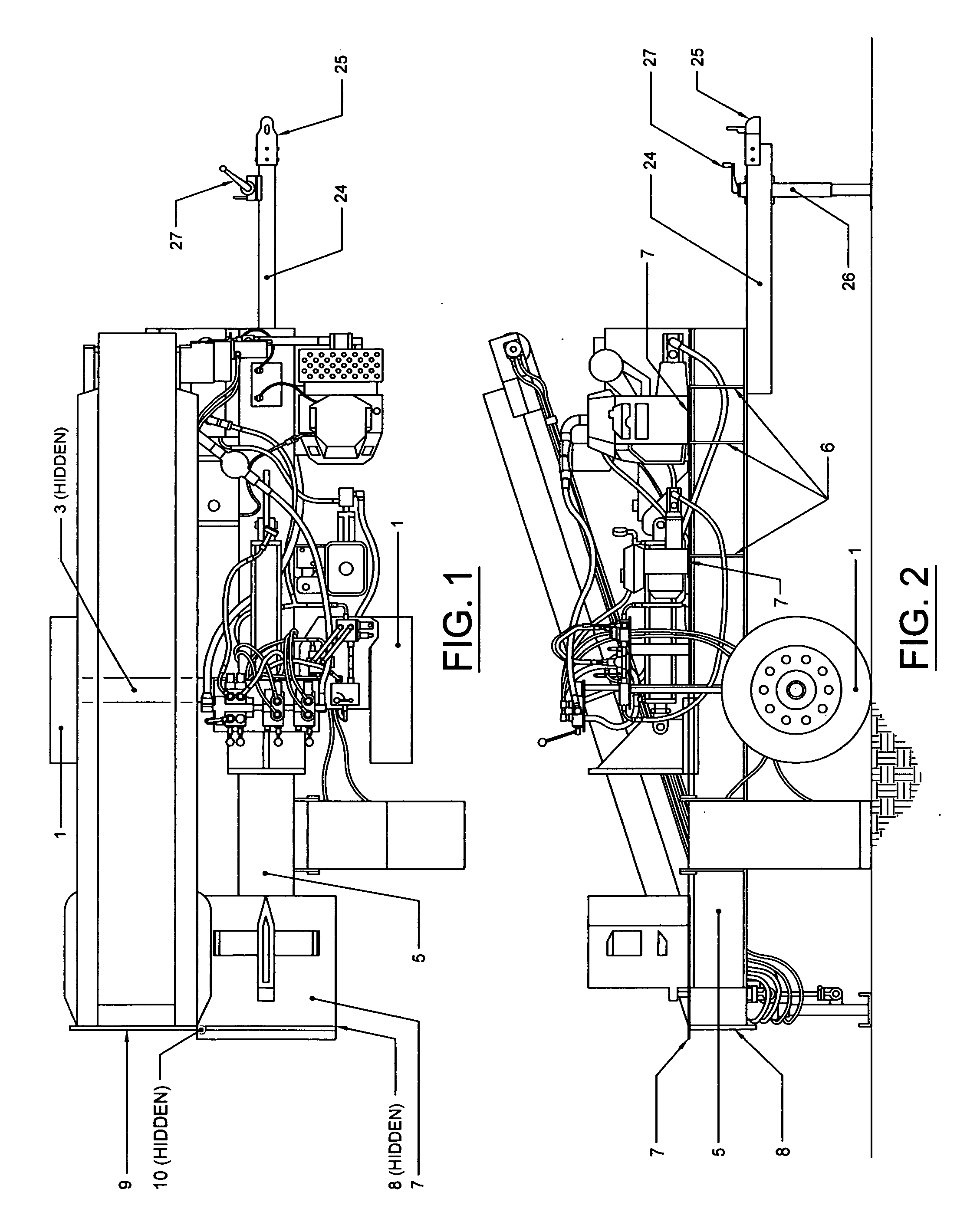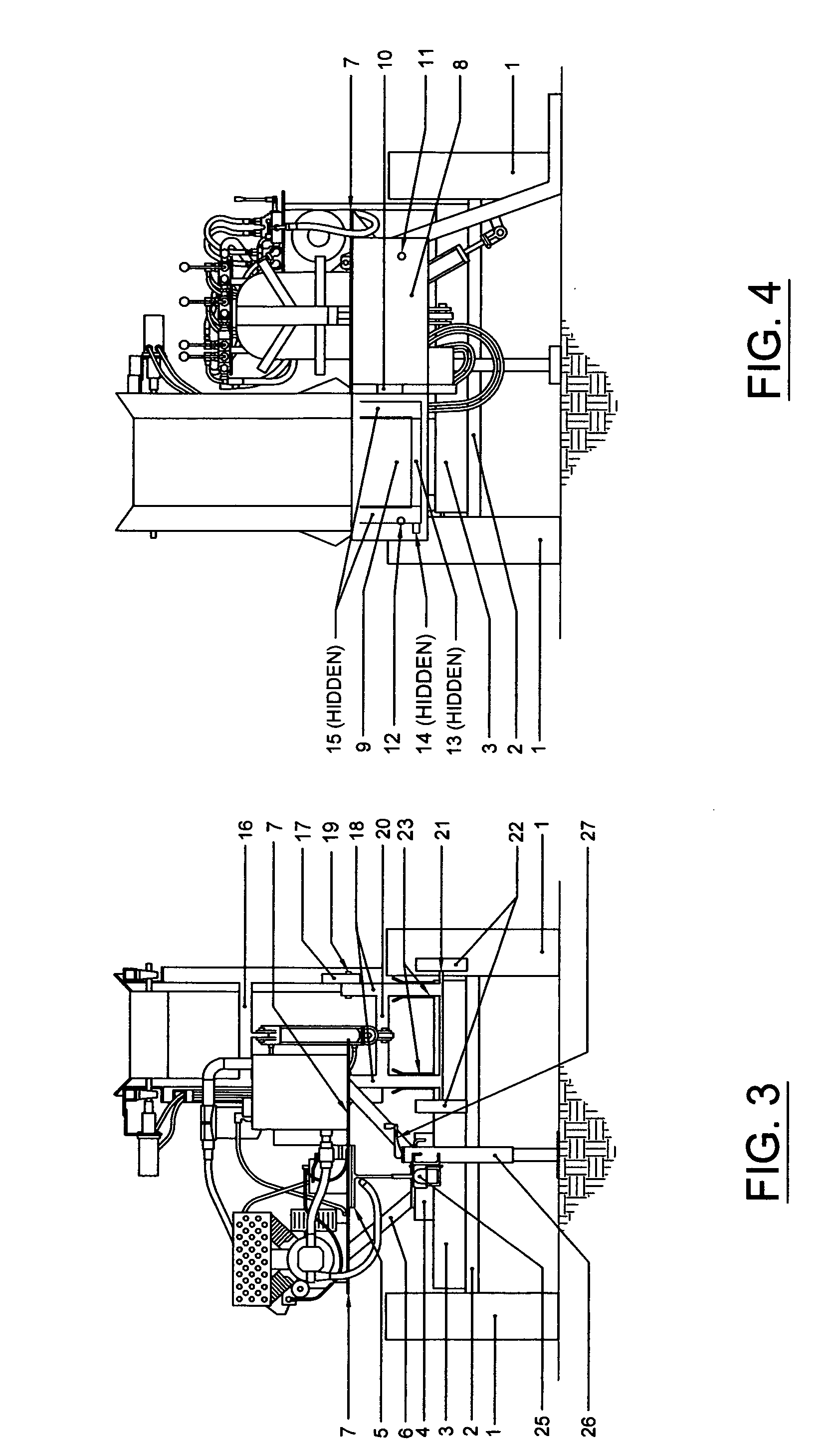Mobile log splitter and pivoting conveyor: two-in-one
- Summary
- Abstract
- Description
- Claims
- Application Information
AI Technical Summary
Benefits of technology
Problems solved by technology
Method used
Image
Examples
Embodiment Construction
[0026]The construction and operation of the present invention is herein described in a manner which corresponds to the progression of the attached drawings.
[0027]In reference to FIGS. 1, 2, 3, and 4, the development of the present invention begins with a pair of wheels 1, linked to one another by an axle which is housed in axle sleeve 2. Axle support beam 3 is then welded to the axle sleeve along its entire length, so as to provide a rigid and square connection point for the framework of the machine. Steel spacer 4 is welded to the top of axle support beam 3, and it is upon this spacer that steel I-beam 5 is centered and welded. Angle supports 6 are then welded to the bottom flange of steel I-beam 5, providing many additional support points for the subsequent welded attachment of steel plates 7. The combination of these steel plates and the top flange of steel I-beam 5, provides the supported surface upon which all the components of the horizontally oriented log splitter system are ...
PUM
 Login to View More
Login to View More Abstract
Description
Claims
Application Information
 Login to View More
Login to View More - R&D
- Intellectual Property
- Life Sciences
- Materials
- Tech Scout
- Unparalleled Data Quality
- Higher Quality Content
- 60% Fewer Hallucinations
Browse by: Latest US Patents, China's latest patents, Technical Efficacy Thesaurus, Application Domain, Technology Topic, Popular Technical Reports.
© 2025 PatSnap. All rights reserved.Legal|Privacy policy|Modern Slavery Act Transparency Statement|Sitemap|About US| Contact US: help@patsnap.com



